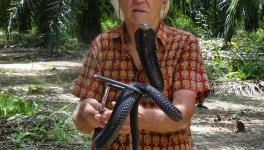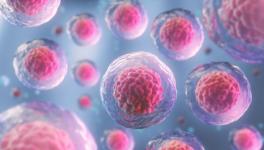The H5N1 Controversy: Can We Redact Science?
For the last 2 months, a raging controversy is going on amongst virologists around the world on whether the research done by two groups, one in Netherlands and the other in the US should be published in full or not.
The National Science Advisory Board on Bio-security (NSABB) of the US has recommended that some parts of the research should not be published as its is too dangerous. The two journals – Nature and Science – that were about to publish the results have been asked to take out some parts to reduce the risk of bio-terrorists using such information. However, another expert group, constituted by WHO and consisting of leading flu researchers in the world have disagreed and have advised the full publication of the two papers. As of now, a final decision is still pending on the publication of the papers and there is also a voluntary moratorium amongst researchers on similar research.
Both the groups, one lead by Ron Fouchier, a virologist at the Erasmus Medical Centre in Rotterdam, and the other, Yoshihiro Kawaoka at University of Wisconsin, Madison had made the H5N1 virus -- commonly known as avian/bird flu – easily transmitted as any seasonal flu. As of now, this deadly strain does not transmit easily amongst human population. The modified virus has therefore the possibility of creating a pandemic killing millions. The popular press has called this virus Doomsday virus or the Armageddon virus.
The NSABB exists in order to examine the possibility of bio-terrorsism. The NSABB got into the act after Fouchier reported his findings in a conference and it was picked up by the science journalists and the popular press.
The avian flu has been raging in the poultry farms in South East and East Asia and has lead to millions of chickens being slaughtered. While some infections have taken place amongst in the human population, it has been restricted to only those who were in direct contact, that is only through bird to human contact route. As yet, there are no cases of its spread through human to human contact. If avian flu can be easily transmitted amongst the human population, it could have disastrous consequences as almost 60% of the recorded cases of those who have contacted avian flu have died, making this the most virulent flu virus strain that we know. The great influenza epidemic of 1918 had a mortality rate of 2% and killed an estimated 40 to 100 million people. If the avian flu virus becomes easily transmitted amongst human population, the resulting pandemic can be even more devastating.
This immediately raises some troubling questions. How easy would it be for the virus to mutate to become easily transmitted? And should we do such research, which itself could lead to the release of such lab made virus into the world? If such research is needed, then what is the bio-security level of the laboratories that would carry out such experiments?
The other controversy that has been raised as a spin off from the current controversy of the two papers is how dangerous is H5N1 avian flu to humans?
The two groups that did the research took two different paths. Both sets of virologists started with a virus that was not spreading through the airborne route and made a variant that had all the lethality of H5N1 and could also spread through air. Fouchier's experiments was particularly important as it showed that only a few mutations would transform the existing H5N1 virus into one that could cause a human pandemic. Both Fouchier and Kawaoka's groups used ferrets for the experiments. The results showed that ultimately the ferrets were being infected through the airborne route. As infections in ferrets and human population are similar, ferrets are generally the choice for such experiments.
This is not the first time such viruses have been created in laboratories. The 1918 influenza virus itself has been recreated in 2005 and the group showed that monkeys infected with this recreated virus showed symptoms very similar to that of the 1918 flu pandemic. Recently, Reuben Donis and his colleagues in Centers for Disease Control and Prevention (CDC) Atlanta, US have reported how they have converted H5N1 to an easily transmissible form though they concluded that such an evolution in nature was not likely. The importance of the two controversial papers is that they show that such a mutation is indeed easy and therefore likely to arise in the wild.
NSABB's position was that the papers can be published but the method used for creating the new variant should taken out. This information would then be made available only to selected scientists and not to the general public. The board has 22 members and this was an unanimous decision.
Last month, the WHO's expert committee that met in Geneva, came to a unanimous decision that was diametrically opposite. It stated that there was no way for the journals or the authors to decide who should be given access to the information and who should not. It also felt that the papers were important in fighting the threat of a flu pandemic. It therefore recommended that the papers should be published in full.
Behind the two decisions is a much larger issue of what are the benefits of such a research as opposed to its risks. For the bio-security experts in NSABB, the risks outweigh the benefits. For the WHO flu experts, it is the benefits of such research – the belief that nature is the biggest bio-terrorist around and therefore we need to know more about what can happen to such strains that drove their decision.
Experts have argued that if the person has the requisite knowledge and access to a laboratory for making such a modified virus, then there is enough knowledge in public domain already for him to do so. In fact a simple Google search shows that almost all the key elements of Fouchier's results are already available or can be easily reconstructed. The CDC paper which has already been published gives details of the methods that are necessary creating the modified virus. Some of these experts have argued that what is required is to have better experts in NSABB who know the field of virology better and not such bans which serve little purpose.
Beyond the WHO and NSABB decisions are also critical issues of who are at risk and who decide what needs to be shared as information? The avian flu virus strains are shared with researchers by countries in the South East and East Asia where such virus outbreaks are taking place with guarantees that the results and benefits out of research would be made available to them. If now it is decided by a body sitting somewhere else that the results flowing out of such research will only be selectively shared, it will cause a breakdown in the way material and research is being done internationally. There is an asymmetry of power between those who provide the bio-materials and those who conduct the research.
Questions have also been raised where such research should be carried out in – Bio-Security Level (BSL) 4 containment or in enhanced BSL 3 laboratories. Canada has already issued directives that allow such research to be carried out only in BSL 4 labs. There is no question that such dangerous pathogens can escape from labs and have done so in the past. The pros and cons here are not as simple as it might appear. If only BSL4 labs are permitted, there are very few of these labs and therefore if this research is indeed important, confining it to BSL4 labs would simply reduce the chances of this work being done. We are back to the question -- how important is this research?
While the figures of 60% mortality appears frightening, there is also a controversy that these figures are much higher than the actual survival rate from such infections. WHO figures are only for reported and verified cases; an examination of the people involved in poultry seems to indicate a large number of unreported cases who have survived – therefore the mortality figures from an outbreak could be far lower. However, this might not provide too much consolation; there is little doubt that even a reduction by a factor of 10 of the mortality would still make it make the most dangerous flu variant known.
The problem in science is what constitutes advanced research and tools become common place with time. The more we know, more the possibility of finding cures as well as creating dangerous weapons. Unfortunately, both go hand in hand -- one cannot be separated from the other. If the Manhattan project that created the atom bomb could only be done by a handful of countries 50 years back, today 50 countries have the capability of making the bomb. Creating a world a safe world by restricting dual use technology or dangerous knowledge is not going to work.
If bio-terrorism is a threat, what prevents the bio-terrorist to use older and more well-known agents? Why would they restrict themselves only to cutting edge research? Why would they not use chemical weapons that are easier to make, as was shown by Aum Shinrikyo in Tokyo in 1995?
Fouchier and Kawaoka have shown that the comfortable belief held by a number of virologists that H5N1 is unlikely to create a pandemic is wrong. Such experiments are then important to identify future threats. It is difficult not to agree with Fouchier that if all the 5 mutations that lead to the creation of this dangerous variant are already present in the wild individually, we need to know more and monitor this carefully. Prohibiting such research as some groups are asking and taking out parts of it from published results is not a viable answer.
What we need is a society that does not create terrorists. That allows people to control their own lives. That does not have burning injustices and inequalities. What we need is to cure society of its ills. Stopping the growth of scientific knowledge to control risks is not an option. Simply because it is like King Canute asking the tide to hold back. It did not work then, it will work now.
Get the latest reports & analysis with people's perspective on Protests, movements & deep analytical videos, discussions of the current affairs in your Telegram app. Subscribe to NewsClick's Telegram channel & get Real-Time updates on stories, as they get published on our website.
























